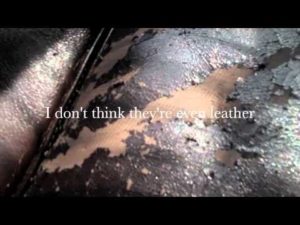Faux leather is a synthetic material that mimics the look and feel of genuine leather at far lower prices.
The most common faux leathers currently are polyurethane and polyvinyl chloride (better known as vinyl.) Polyester is used in many of the newer composite faux leathers. All faux leathers attempt to mimic the look and feel of real leather. Some come very close.
All three of these types of faux leathers are extremely durable and stain-resistant.
- Polyurethanes are generally softer and closer to the actual look and feel of real leather than the vinyls. As a result polyurethane faux leathers are growing in popularity for residential furniture buyers.
- Vinyl fabrics have become far less popular for residential furniture. Higher cost vinyls are still widely used for commercial and institutional use where durability is the most important factor.
- Composite faux leather combines polyurethane and polyester. Sometimes vinyl is also part of the composite. Composite faux leathers are only a couple of years old. Some major retailers are using them to replace bonded leathers.
“Bonded leather” is an inferior flimsy product whose only purpose is to fool uneducated consumers into believing they are buying genuine leather furniture at a cheap price.
It is especially popular in reclining furniture, office seating and small leather accessories.
Nobody should buy “leather” furniture unless they understand the difference between real leather made from hides, faux leathers and bonded leather.
Genuine leather and faux leathers do not peel.
“Bonded leathers” are typically made of thin layers of vinyls or polyurethanes that are “bonded” (glued) to a backing consisting of anywhere from 10% to 20% “genuine” leather hide scraps. These scraps have been chopped into tiny pieces, mixed with adhesives and rolled flat.
The face of the bonded leather fabric is 100% vinyl or polyurethane. You do not see or feel any of the “genuine” leather part of a bonded leather fabric.
The biggest problem is that chopped up leather particles make a very poor backing material. The surface material frequently begins to “peel” away from the backing after only a few years or even a few months.
If you purchase bonded leather furniture which begins to peel retailers will usually do absolutely nothing for you. This type of problem is usually specifically excluded from both conventional warranties and extended warranties.
At that point all you can do is sue the retailer. There are many lawsuits currently in litigation regarding bonded leathers that began to peel after a short period of time.
For example take a look at this NBC video and article. This is an interview with the CEO of a major (and highly reputable) furniture retail chain who is asked about bonded leather in response to multiple customer complaints .
At one point, when the CEO is asked about whether the peeling may be caused by customer abuse of the furniture he replies, “I’m not saying they [the customers] did something wrong, what I’m saying is that it’s delicate.”
Most consumers purchase leather furniture because they believe it will be extremely durable. I can virtually guarantee that none of these consumers were ever warned by their salespeople that “bonded” leather was a “delicate” material.
Another important note was also brought up in this interview. Extended warranties that customers think are protecting them for “everything” do not.
An editorial in Furniture Today, the leading trade publication for the furniture industry, discussed the many problems associated with bonded leather.
The author of the article proposed that maybe it was time for bonded leather to be voluntarily banned by retailers and manufacturers throughout the furniture industry.
The use of the term “leather” to describe bonded leather products is already banned by law in some other nations.
Know someone who might be interested in this post? Please like and share this post with them. If you have questions or comments please leave them below.
